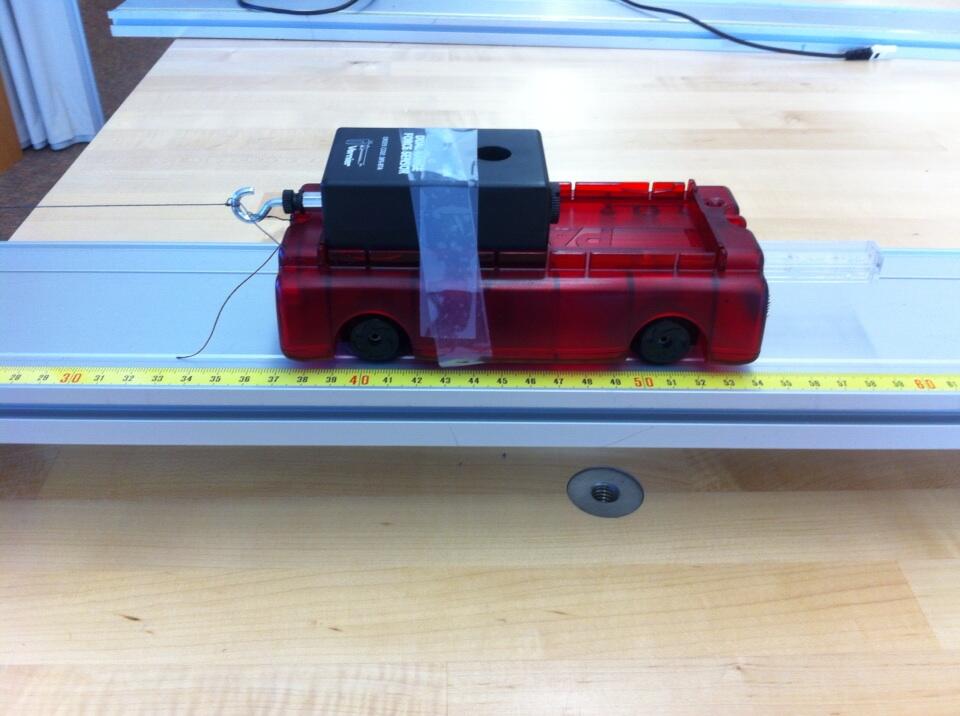
Two summers ago, Jeff Steele of Amherst, VA described his laboratory "stations" for Newton's First Law experiments. He set up five or six situations, and send his students to deal with each of them in turn.
My 9th grade class is working on Newton's Second Law right now. The big issue, obviously, is understanding and believing that the net force is in the direction of acceleration, not motion. Beyond busting that misconception, I want to give students plenty of practice and hands-on experience with free body diagrams and (qualitatively) the second law.
Borrowing from Jeff's "stations" approach, I set up three very basic experiments in the back of my classroom:
(1) a force plate connected to a labquest
(2) a PASCO cart on a track, connected by a string over a pulley to a hanging 100 g mass; the string is attached to the cart via a Vernier force probe, as shown in the picture
(3) a fan cart on a track, connected by a string over a pulley to a variable-mass hanger... the fan provides a force of 0.27 N.
Each of these three setups can support a few different predictions:
(1) I can have students jump off OR land on the force plate, predicting whether the reading will be greater or less than their weight.
(2) I can have the hanging 100 g mass moving upward and slowing down, OR moving downward and speeding up. In each case, students can predict whether the tension in the string will be greater or less than one newton.
(3) I can require that the fan cart move left OR right, while either speeding up OR slowing down. (That's *four* different predictions!) Students can predict whether they should use more or less than 0.27 N of hanging weight in order to get the motion I require.
I randomly distribute lab sheets, so everyone is working on a different prediction. Each sheet describes the relevant motion, and guides students through the prediction. When they have made the prediction, I have them do the experiment. The experiments are simple enough -- and we are by now good enough at using the labquest -- that I can sit in front of the room and wait, only troubleshooting where necessary. Everyone brings me the labquest to show me the results when he's done.
If you'd like to use or modify the lab sheets for your own class, they're available via this google doc link.



No comments:
Post a Comment